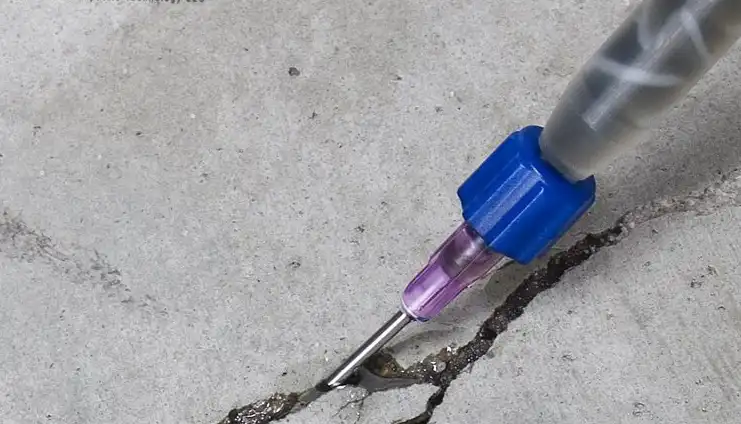Cracking is an unavoidable response of any structure while designers are trying to eliminate many of the causes of cracking and design tolerance for other factors. Inappropriate steps during construction and some unavoidable reasons different types of cracks start to appear on various structural and non-structural parts of the building. Therefore adopting preventive measures are essential. Selection of crack fillers are even pivotal as they play a major role in repair of internal and external cracks. The crack fillers must be non-shrink, high strength and specially formulated. It must be flexible enough to accommodate movements in the cracks and must offer excellent adhesion.
Understanding and addressing crack in foundation wall is paramount for preserving the structural integrity and safety of a building. Foundation cracks can compromise the stability of the entire structure, leading to potentially severe consequences if left unattended.
Given below are few crack filler options that could be adopted for your crack filling of structures.
Acrylic resin sealer for crack repair
The acrylic resin is characterized by high quality, low viscosity and high elongation percentage. The fundamental mechanical properties of acrylic resin by using super lightweight powder were examined. And the repair effects of acrylic resin as crack repair material were examined by the flexural loading test of the concrete member repaired by crack injection technique. As a result, the acrylic resin could adjust the viscosity by using super lightweight powder, and the elongation percentage of acrylic resin was superior to epoxy resin. The crack repair effects of acrylic resin were equivalent to the epoxy resin under drying conditions of the crack surface of concrete members. Acrylic resin seals remain unaltered even after many years of exposure to severe weather conditions, industrial environments and thermal gradients. They remain flexible in temperatures as low as –30°C and resist temperatures up to +80°C.
It can be used between precast concrete panels, prefabricated panels in concrete, wood and gypsum board, wooden frame and masonry, masonry, between walls, insulation panels and external building features (doorsteps, windows, window-sills, cornices, etc.) in thermal cladding systems.

Solvent-free epoxy adhesive for crack repair
Solvent-free epoxy adhesives with low viscosity are specifically for use in building and construction, especially suitable for filling saw cut joints and cracks. It is used for repair and filling systems that seal cracks in cement/sand screeds and concrete. Solvent-free epoxy adhesives have the consistency of a slightly thixotropic paste that can be applied by brush on both horizontal and vertical surfaces. For adhesives to be called solvent-free, they must not contain more than 5% solvents. Therefore, several different technologies have been developed to reduce or eliminate the solvent content of the systems. The technologies include solvent-free glue, hot melt and high solids adhesives as well as waterborne systems. All these systems are considered low VOC adhesives.
It can be used in construction joints for the structural reinforcement of beams and pillars and decayed industrial flooring.

Epoxy resin with a very low viscosity injection for crack repair
Ultra-low viscosity, two-component epoxy injection resin can be used for structural injections in concrete and can be used in a dry or wet environment. Once mixed the product becomes a very fluid liquid that can easily penetrate even in microcracks. Surfaces to be repaired or sealed need to be clean and sound. The concrete surface must be free of dust, laitance, sealers, grease or any other contaminants that might influence the bonding of the resin to the concrete. Entry ports for injecting should be approved devices spaced at appropriate intervals to accomplish full penetration of the resin into the cracks or voids.
It can be used for monolithic sealing of cracks, bonding steel plates to concrete, structural repair of beams, pillars and cracked floors by low-pressure injection, reinforcement of beams and floors by injection, repair of architectural concrete, wall coverings and architectural elements, structural consolidation and restoration of civil and industrial road constructions and underground works that show signs of microcracking.

Ready-to-use fiber-based compound for crack repair
Ready to use fiber-based crack filling compound can be used for both interior and exterior surfaces to ensure unmatched crack bridging ability for plaster cracks. It is reinforced with glass fibers for superior mechanical strength. It provides very strong adhesion on all absorbent surfaces like plaster, wood, gypsum, POP, asbestos, etc. It comes with a High elongation film that accommodates movement and stops water ingress. It is water-based, which is not flammable.

Ultra-Fast Setting Resin for crack repair
Ultra-Fast Setting Resin is very fast curing adhesives that are specialty mercaptans. These hardeners have a relatively safe toxicity profile and can be mixed with bare hands. For example, they are used for hand-moldable epoxy putties. The products are fast setting, 100% solids coatings, adhesives and binders used for a wide range of civil engineering and flooring applications.
It can be used in waterproofing tunnels, waterproofing shafts repairing cracks in dams, channels, and sealing cracks in floorings or slabs.
Conclusion
Construction chemicals are often used in various elements of projects to achieve various important qualities such as workability, durability, etc. Construction chemicals exist in many varieties from a large number of manufacturers worldwide. Construction chemicals have come of age. There are plenty of new products available and using them the right way is the key.


